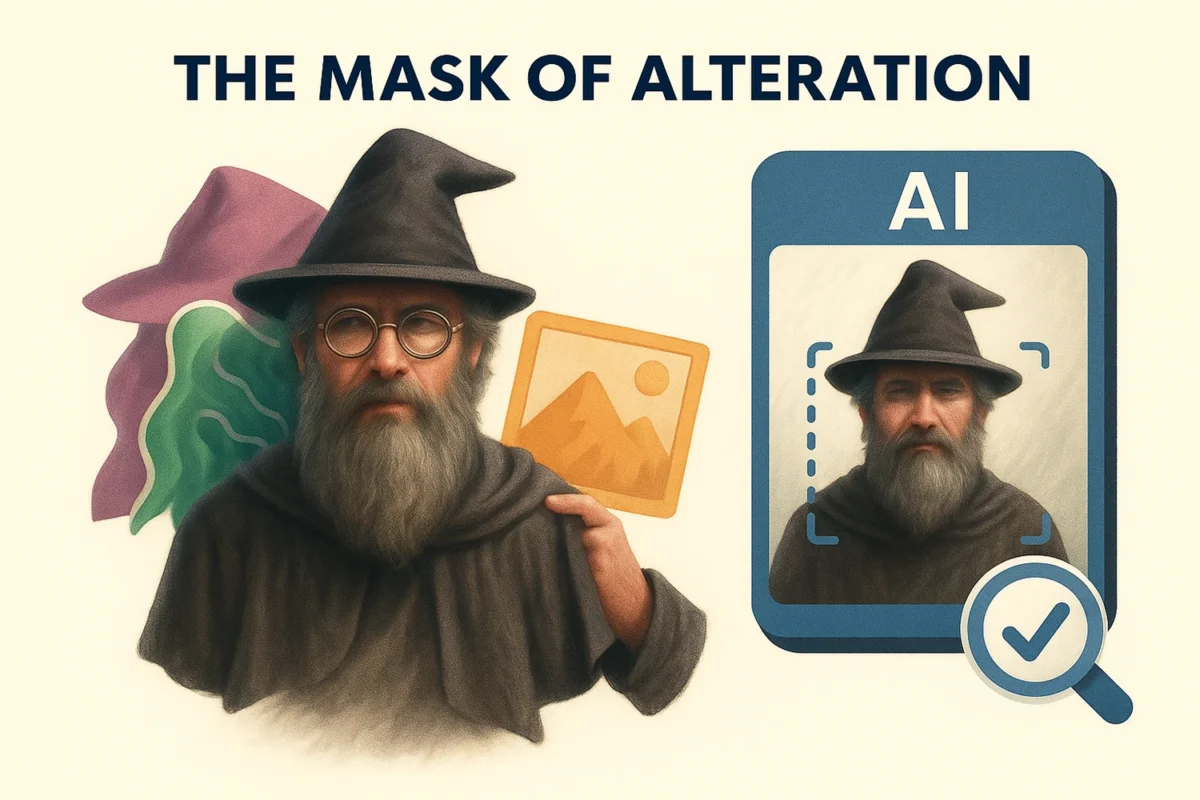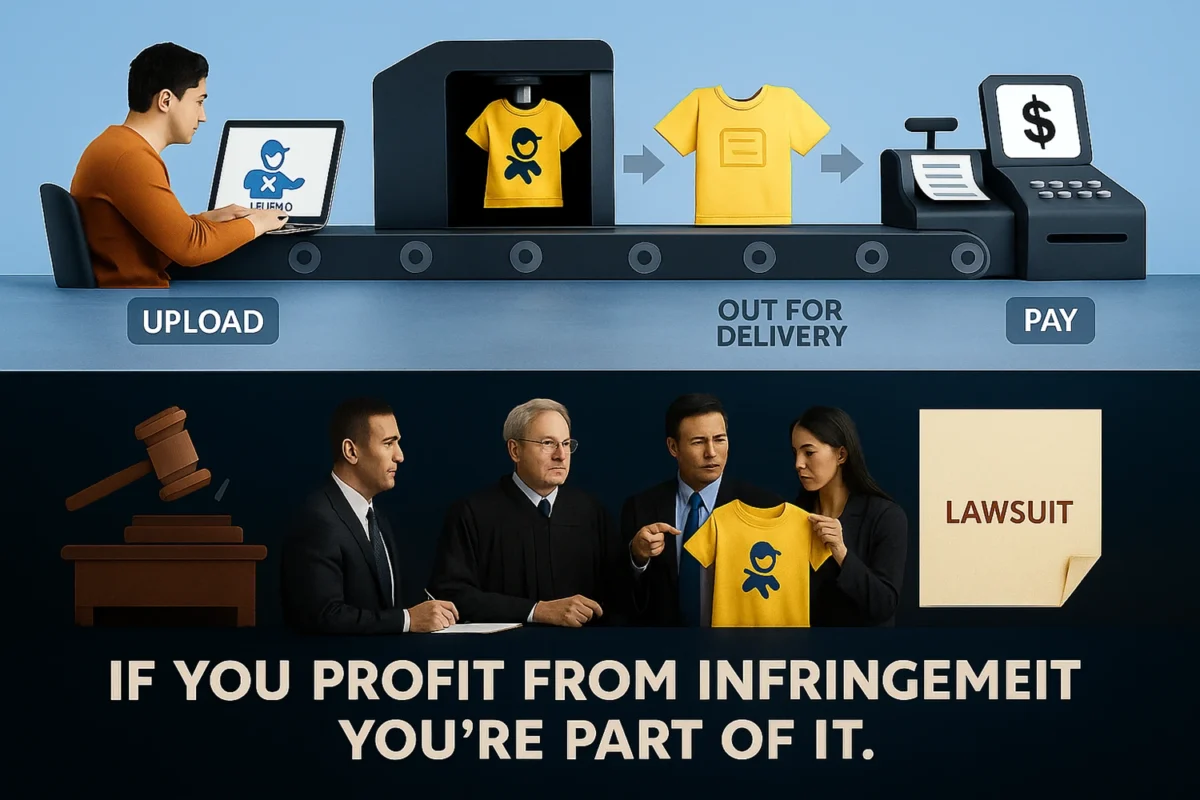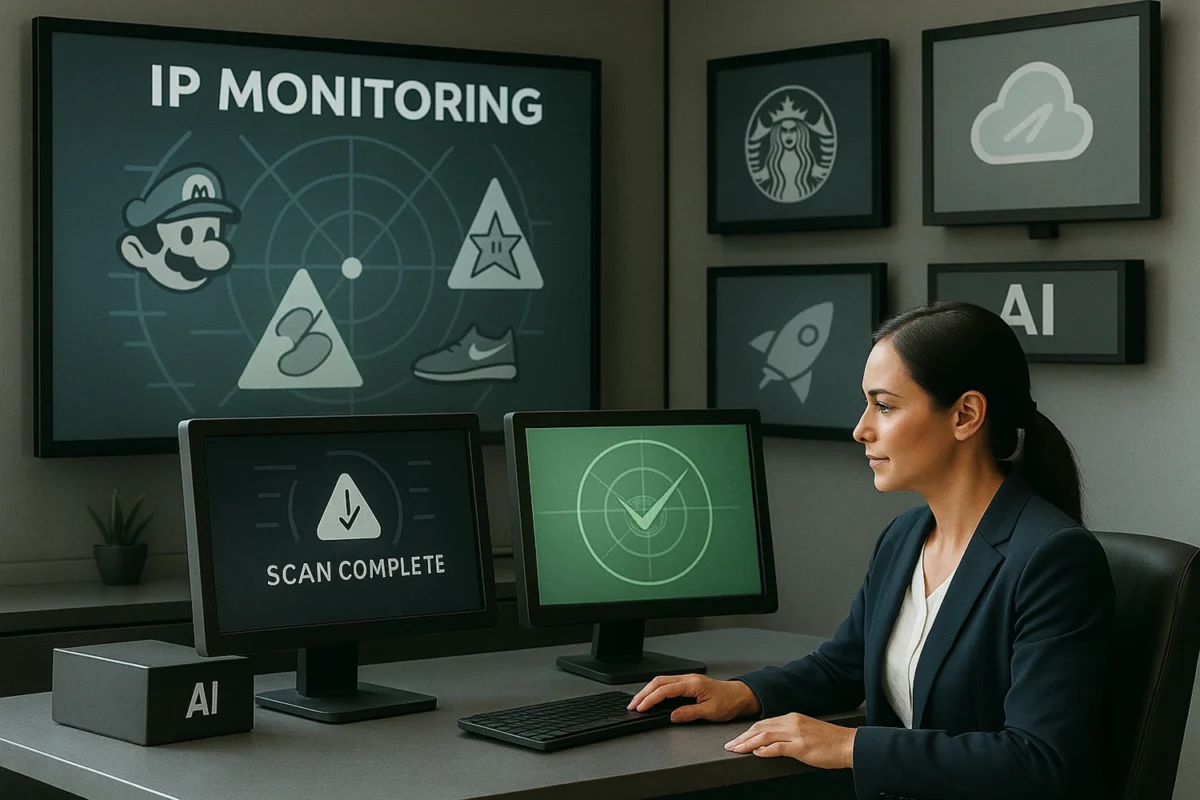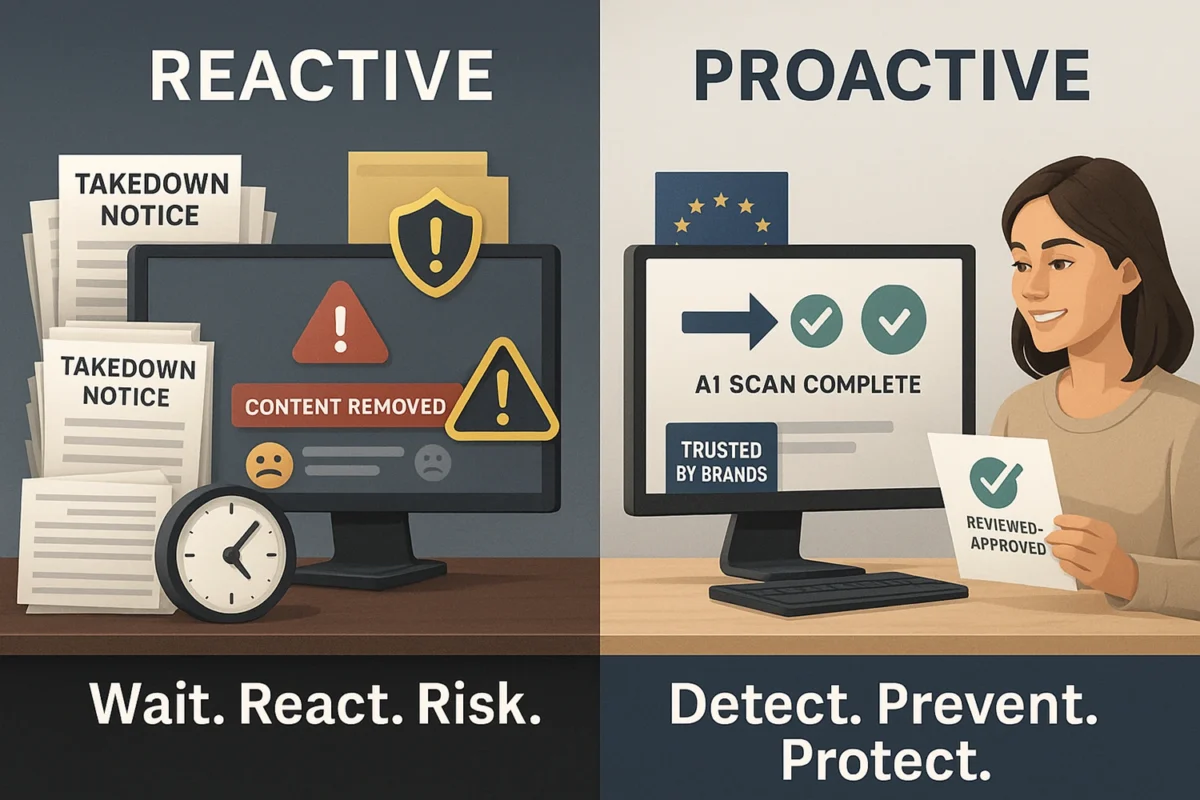Designs, Logos, And Character Art: What Gets Flagged And Why
If your platform hosts custom designs, UGC, or print-on-demand (POD) content, you’ve likely seen this question come up:
“Why did this get flagged? It’s not even the real logo!”
From slightly tweaked fan art to clever mashups, creators often believe their uploads are safe – while platforms struggle to explain why they aren’t.
Here’s what gets flagged, why it happens, and how context-aware tools like VISUA’s Infringio can make those decisions more accurate, consistent, and defensible.
1. What Gets Flagged: The Big Categories
Platforms use a combination of keyword filters, logo databases, and visual AI to detect risky uploads. But here’s what consistently triggers alerts:
- Logos – even partial, stylized, or color-altered versions
- Character art – especially iconic poses, faces, or styles
- Slogans & taglines – even if formatted differently
- Fonts and trade dress – visual identity elements tied to brands
- Franchise aesthetics – colors, props, scenes, or motifs clearly referencing known IP
Key insight: It doesn’t need to be an exact match to be legally risky.
2. Fan Art: The Slippery Slope
Fan art is the most commonly misunderstood category. Many creators assume:
- “I drew it myself, so it’s mine.”
- “It’s a tribute, not a copy.”
- “It’s just for fun!”
But legally, fan art that depicts recognizable IP is still infringement unless it qualifies under narrow exceptions like fair use (see Fair Use: When Is It Legal?) or parody (see Parody vs. Infringement).
Even small deviations – different colors, added backgrounds, new outfits – don’t eliminate the original character’s identity.
Platforms that allow or ignore fan art at scale are often viewed as profiting from unauthorized derivative works – and can lose Safe Harbor protections.
3. Mashups: Clever = Riskier
Mashups – like “Pokémon + Star Wars” or “Barbie x Banksy” – are often praised for creativity. But from an IP perspective, they double the risk.
Why?
- They involve multiple rights holders
- They don’t transform the IP enough to qualify for protection
- They create more market confusion, especially when sold on commercial products
These designs often get flagged because they stack multiple types of infringement in one upload – even if they seem “harmless.”
4. Why Is Something Getting Flagged?
Designs may be flagged for reasons that creators don’t see – like:
- Stylistic similarity to protected artwork
- Use of trademarked color schemes or fonts
- Contextual cues (e.g., a wizard, a broom, and a castle = clear Harry Potter reference)
- Metadata clues, such as tags, titles, or filenames mentioning brands
And many platforms don’t explain it clearly – leading to creator frustration and false accusations of censorship.
A more transparent, context-driven approach helps prevent blowback and increases creator trust.
5. Infringio: Context-Aware Flagging That Makes Sense
Traditional filters miss nuance. They over-flag safe designs – or miss clever infringement entirely.
Infringio by VISUA uses contextual vision AI to:
- Analyze the meaning behind a design – not just pixels or logos
- Spot stylized or suggestive IP use, even when the branding is altered
- Flag likely issues for human moderation, not automatic takedown
- Explain why something was flagged with rich metadata and visual cues
This results in fewer false positives, smarter enforcement, and clearer communication with creators.
Conclusion: Flagging Is Inevitable – But It Doesn’t Have to Be Frustrating
Designs, logos, and characters are deeply tied to brand identity – and courts expect platforms to be vigilant.
But not every upload needs to be blocked.
Platforms that understand why things are flagged – and use tools that analyze context, not just matches – will reduce both liability and creator churn.
VISUA’s Infringio helps you strike the balance:
- Flag what matters.
- Explain why.
- Scale with confidence.
Want to reduce IP risk without annoying your creator base? Book a demo with VISUA today to see how Infringio’s context-driven IP detection works in action.
Disclaimer: Not Legal Advice
This content is provided for informational purposes only and does not constitute legal or professional advice. The information reflects our understanding as of the date of publication and may not apply to every situation or jurisdiction. You should consult qualified legal counsel for advice tailored to your specific circumstances. Any actions taken based on this content are at your own risk. Neither VISUA nor its affiliates accept liability for any losses or damages arising from the use of this information.
Book A DemoRELATED
Redbubble, Teespring, and the Lessons of IP Enforcement Failures
Reading Time: 3 minutesPrint-on-demand (POD) platforms empower creators to design and sell products without holding inventory. But with that power…
BlogHow AI Is Changing the Game in IP Enforcement
Reading Time: 2 minutesIP enforcement used to be simple: But today’s infringement landscape – especially for POD and UGC-heavy platforms…
BlogThe Future of IP Compliance – Proactive vs. Reactive Models
Reading Time: 2 minutesFor years, most platforms treated IP compliance as a reactive function: But the market – and the…
Blog


